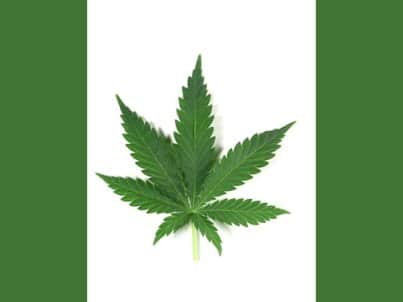
 In the lead up to legal recreational marijuana in Canada, one claim that’s constantly being chanted among industry players and media types alike is that, over the near term, at least, demand will outstrip supply by a long shot and that it’ll take years before all of our law-abiding pot enthusiasts will be able to consistently count on a regulated market to satisfy their cravings.
In the lead up to legal recreational marijuana in Canada, one claim that’s constantly being chanted among industry players and media types alike is that, over the near term, at least, demand will outstrip supply by a long shot and that it’ll take years before all of our law-abiding pot enthusiasts will be able to consistently count on a regulated market to satisfy their cravings.
While, it’s a mug’s game predicting how the marijuana sector will eventually play out, a quick look at the numbers says that, in fact, there’s no reason to panic. Unless, that is, you’re one of the many growers with high hopes of becoming Canada’s pot kingpin —already, there are way too many dreamers out there planning to grow so much weed that even if half of us changed our names to Cheech and the other half to Chong, there’d still be too much to pass around.
On the face of it, the idea that from coast to coast, dispensaries and provincial retail outlets will be picked clean mere hours after the floodgates open is obviously an attractive one, as it speaks to the emergence of a huge and up until now untapped (and unregulated) economy. So, it’s no surprise that Canada’s new weed industry is spouting that line.
To point out a few, Canopy Growth’s Bruce Linton has gone on record saying there’ll be a shortage and so has Chuck Rifici of Cannabis Wheaton Income.
Here is Chris Wagner of Emerald Health who, when asked why he’s sure that there’ll be buyers for all his company’s product, said, “There’s going to be more demand than supply, so if [provincial and territorial governments] want to service their customers, if they want people to transfer away from the black market and if they want to achieve what the federal government has set out for them to achieve, then they’ll need to buy from people like us.”
True? We’ll know for sure in a year’s time, but for now let’s look at the numbers.
Estimates vary on how much marijuana we’ll need. We have quotes from Denver, Colorado-based marijuana consultants the Marijuana Policy Group who say that Canada’s demand will be as high as 900,000 kg of pot a year and from investment bankers Mackie Research Capital who put the figure at 795,000 kg. At the other end of the spectrum, we have consulting firm Deloitte who says it’ll be a 600,000 kg a year industry, along with the federal government’s Office of the Parliamentary Budget Officer who have set the figure at 655,000.
For the supply side figure, we added up the 2018 projections from the 21 cultivator companies listed on the Canadian Marijuana Index and found that, together, they’re planning to have a total of 704,000 kg of cannabis ready and available before the end of the year. That includes the big guns like Aphria, the Hydrotherapy Corp. and Aurora Cannabis who all claim to be on track for over 100,000 kg of domestic product in 2018 as well as the smaller operations like Newstrike Resources and Abcann Global who are each planning for less than 5,000 kg this year.
Note that the 704,000 kg doesn’t include private companies like Tilray (which could add 40,000 kg by the end of 2018) nor the whole raft of smaller cap public companies out there. But even discounting those suppliers, the 704K hits somewhere in the middle of the market demand estimates.
Is it likely that we’ll see all 704,000 kg this year? That kind of scale-up would be enormous. Consider that in 2016, about 40 Licensed Producers together managed to put out only 31,000 kg of cannabis, so there’s bound to be more than a few hiccups for almost all of these companies.
At the same time, remember that those demand projections represent a fully functioning pot market: they are not estimates of the likely demand right out of the gate, nor are they going to be good estimates for the less than half a year left in 2018 during which we’ll have legal rec up and running.
The off-the-cuff guess is that the two should probably meet somewhere in the middle, with public and private companies this year supplying maybe half of what they say they will (into the mid-300s) and Canadians flocking to their local retailers at maybe half of their full market pace, also into the 300s.
Thus, from the numbers we’ve seen —and, just for argument’s sake, leaving out all of the big issues concerning distribution and retail— we’re probably not going to have the catastrophic shortage of product that’s been predicted.
And knowing that (or at least assuming it) is important, since the supply question isn’t just about whether or not we’re going to have a few irate potheads on our hands. Rather, it’s the government’s explicit aim is to choke out the black market and that can only happen if it can offer cheaper prices and if it has enough product.
Finally, in case you were wondering, the long-term picture is where it gets funnier. Adding up the pipe dreams (sorry) and the full capacity production numbers from all 21 Pot Index cultivators and you get this: 1,995,000 kg.
That’s a lot of smoke.
Leave a Reply
You must be logged in to post a comment.




 Share
Share Tweet
Tweet Share
Share




Comment